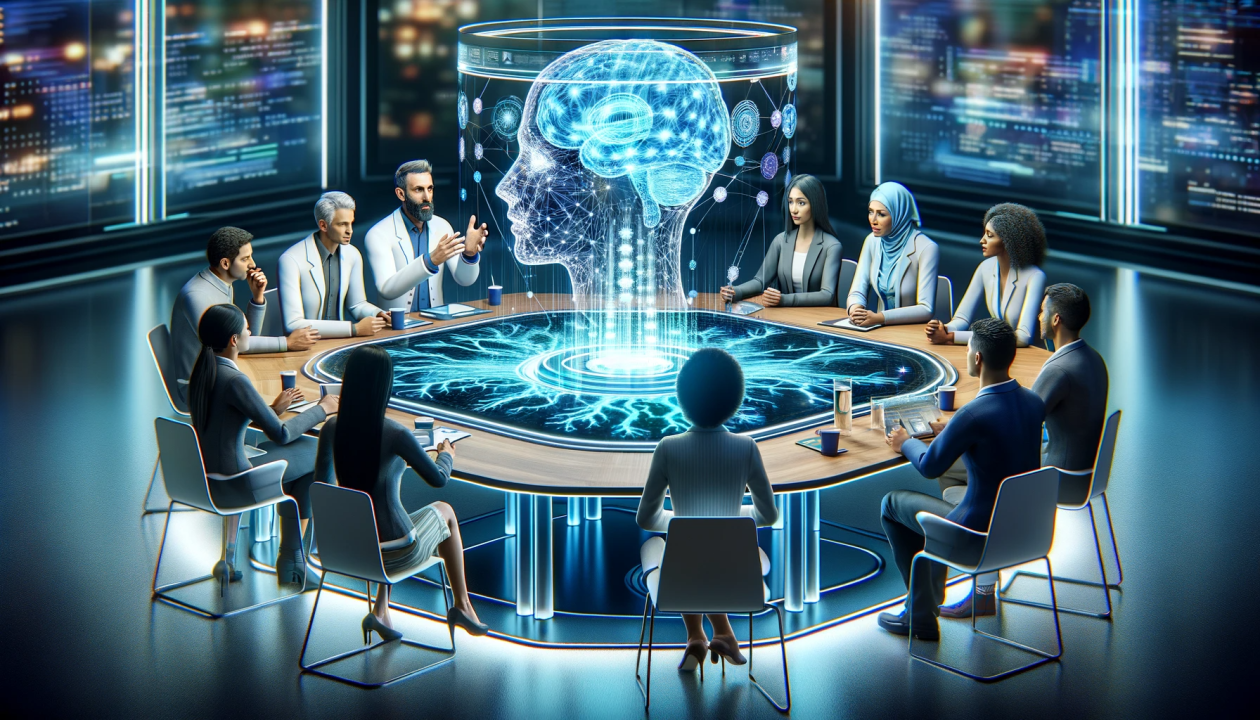Generative AI has accelerated its evolution from a technology that was once considered a niche to an industry-wide phenomenon that is changing the face of industries all over the world. As we move towards 2025, the capabilities of Generative AI are predicted to increase further, creating new opportunities and challenges to companies, researchers, and even consumers. Starting with content generation to technological advances and technological advancements, it is expected that generative AI is set to continue to transform our approach to problem-solving and innovation. We’ll look at the major trends that will shape the future of generative AI in 2025..
Personalization is enhanced across all industries.
A major innovation in the field of generative AI in 2025 is the ability to provide more personalized experiences across a variety of industries. In the market for consumers, AI-powered systems can allow companies to develop hyper-personalized products or services as well as content that is tailored to the individual’s preferences. For instance, fashion retailers might use the power of generative AI to create custom clothing collections based on the customer’s prior purchases and fashion preferences. Similar to healthcare, in the sector, AI can help generate specific treatment plans for patients, providing doctors with greater insight into the treatment of patients. This trend is likely and push companies to embrace generative AI to remain competitive with solutions that were previously unimaginable, becoming the norm.
Artificially generated content in the creative industries
The industries of creativity, such as film, music, and art, have already started to see the impact of generative AI, and in 2025, this trend is expected to accelerate. AI tools will get more advanced, allowing creators to produce music and artistic works, literary works, or even full-length movies without human involvement. Although some critics claim that AI could be able to replace professionals in the creative field but the reality will be more collaborative, in which AI is a potent instrument that can enhance the process of creativity. Musicians, writers, and artists will utilize the power of generative AI to generate thoughts, get over creative blockages, and bring their ideas to life in ways previously impossible.
Improvements in natural processing of language processing (NLP) and collaboration between humans and AI
Natural Language Processing (NLP) is one of the fastest-growing areas of the field of generative AI, and by 2025, we could anticipate even more advanced capabilities. NLP will enable machines to recognize and produce the human voice with more precision, which will allow for deeper and more relevant interactions between AI and humans. Companies will increasingly rely on AI-powered agents for support for customers as well as to automate the creation of content and even aid in making decisions. These AI assistants won’t just improve efficiency, but they will also be more adept at recognizing subtle emotions and contextual information and will be able to communicate with clients on a more personal level. This is also likely to blur the boundaries between machine and human collaboration, changing industries such as finance, healthcare as well and customer support.
AI-driven innovations in research and science
Generative AI is expected to play a major role in the acceleration of breakthroughs in science and technology. In 2025, we can expect AI models to be utilized to create new theories, create experiments, and perhaps even identify new drugs or materials. In the case of pharmaceuticals, the use of artificially generated AI could mimic molecular structures in order to identify possible new drugs much faster than conventional methods. In the same way, AI could be used to create climate models or forecast changes in the environment, which will allow for rapid responses to global challenges such as climate change. In addition, by aiding in the research process as well as generating models, the generative AI will allow researchers to achieve breakthroughs at a rapid speed, tackling many of the most challenging issues.
Ethics and regulations
As generative AI is evolving and evolve, so do the ethical issues regarding its use. Concerns related to deepfakes, inaccurate information, and biases of AI models will be subject to greater scrutiny in 2025. The regulatory and government agencies will likely adopt stricter rules to ensure that AI-generated generative models are used sensibly. For instance, content created by AI could require clearly labeled content to avoid confusion or deceit. In addition, the transparency of AI decision-making processes is the primary goal to stop discrimination and bias. Businesses that develop and deploy generative AI solutions will have to be proactive in addressing these issues by adhering to moral guidelines and constructing AI systems that are transparent, fair, and safe.
Generative AI in autonomous systems
A different trend that is expected to emerge in 2025 is the incorporation of the use of generative AI in autonomous systems. Autonomous vehicles have received significant attention in recent years, and generative AI is expected to enhance their capabilities by allowing them to take real-time actions in complex, dynamic environments. For instance, AI systems could generate adaptive driving strategies based on the surrounding conditions, which would prove the safety and efficiency. Beyond cars, generative AI could be used to create robots, drones, and other devices, making them better able to perform tasks that are not predictable, like delivering goods as well as conducting surveillance, or carrying out complicated manufacturing processes.
Expanding the virtual worlds created by AI and metaverses
The concept of the metaverse is gaining popularity, and generative AI is expected to play an integral part in the creation and evolution of virtual worlds. In 2025, we can anticipate AI to be utilized extensively to create interactive virtual worlds that react to users’ actions in real-time. Generative AI will allow the creation of real-life, interactive 3D environments with personalised elements that can be adapted to the specific users. This will not just change entertainment, but also other industries like education, real estate as and tourism. 3D immersion and simulations are expected to be a key element of consumer interaction.
Conclusion
The future of Generative AI by 2025 will be full of challenges and opportunities. As AI technology advances, we’ll see more sophisticated and personalised applications across all industries, from creating content to the development of scientific ideas.
Automating processes and tasks, AI-powered apps can cut operating costs, reduce mistakes, and maximize the efficiency of resources, resulting in cost reductions in costs for businesses. AI solutions also create predictive models that predict results, anticipate trends, and detect potential opportunities or risks, which can help in the ability to make informed decisions and managing risk. We can let Direct Impact Solutions specialists help you understand the power of AI.

